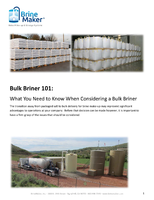ANSI/NAM Network to tackle REACH implementation challenges.

Press Release Summary:

On Oct 17, ANSI and NAM convened first meeting of Network on Chemical Regulation to provide forum for U.S. industry to address Registration, Evaluation, Authorization, and Restriction of Chemicals (REACH) implementation concerns. Participants have called for high-level common process implementation guidelines that can be customized to meet needs of industry sectors. Need for common inventory of chemicals was also identified, as was need for consistent nomenclature, tools, and evaluation methods.
Original Press Release:
ANSI/NAM Network to Tackle REACH Implementation Challenges
Implementing the new European Union legislation on the Registration, Evaluation, Authorization, and Restriction of Chemicals (REACH) poses many challenges for manufacturers in the global supply chain. On October 17, 2007, the American National Standards Institute (ANSI) and the National Association of Manufacturers (NAM) convened the first meeting of a newly formed Network on Chemical Regulation (Network) to provide a forum for U.S. industry to address REACH-implementation concerns that cross industry sectors.
REACH Implementation Timeline
Because of its complexity, REACH is being phased in gradually.
Half of the legislation's fifteen principal elements took effect on June 1, 2007, including scope, fees and charges, and enforcement issues.
The remaining principal elements will apply beginning June 1, 2008, including:
-registration
-sharing of data
-obligations of downstream users
-evaluation
-authorization
-classification and labeling of inventory
The inaugural meeting, which took place as part of the ANSI-hosted World Standards Week 2007 series of events, was attended by more than ninety experts from fields including aerospace, automotive, consumer and household goods, telecommunications, as well as the federal government. An executive summary of the meeting is available for download and review.
"REACH implementation could cost billions of dollars for U.S. industry unless companies work together to harmonize registration procedures and share best practices," said William Primosch, senior director of international business policy at NAM. "We established this Network to help manufacturers address the complex issues raised by REACH and anticipate similar chemical regulations in other key markets."
A small group is working together to compile and prioritize the key issues raised during the first meeting. Going forward, teams of subject matter experts and interested Network members will be formed to address the strategic, supply chain, information dissemination, and other issues that were identified during the interactive discussions.
On the strategic level, meeting participants have called for high-level "common process" implementation guidelines that can be customized to meet the needs of different industry sectors. The need for a common inventory of chemicals was also identified, as was the need for consistent nomenclature, tools, and evaluation methods.
Looking ahead, manufacturers agreed that they must work to ensure consistency in upstream and downstream communication practices, including request and response forms and materials declarations. Attention will also be given to the identification of acceptable mechanisms that manufacturers can use to certify that their suppliers are also compliant.
Information resources to educate and inform business leaders and government officials about the importance of REACH implementation will also be developed. In the meantime, meetings, events, workshops, and conference calls to discuss chemical issues will be identified on a newly created calendar of events.
Finally, the Network administrators will reach out to contacts in the EU to confirm whether foreign (i.e., non-EU) test results will be accepted as a demonstration of REACH compliance and whether the groups responsible for developing REACH implementation guidance documents are open to representation from non-EU countries.
To learn more about the discussions and action items resulting from the meeting, download the executive summary. For additional information or to join the Network, send an e-mail to chemicals@ansi.org or contact Brian Meincke, ANSI's director of membership development (212.642.4940, bmeincke@ansi.org).




